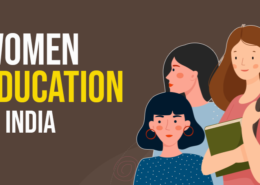Despite the long-term advancement in technology and media, one thing that has not seemed to have changed is the portrayal of women with the most unrealistic standards. This often leads to impacts such as dysmorphia, body dissatisfaction, low self-esteem, depression, eating disorders, and even a negaRead more
Despite the long-term advancement in technology and media, one thing that has not seemed to have changed is the portrayal of women with the most unrealistic standards.
This often leads to impacts such as dysmorphia, body dissatisfaction, low self-esteem, depression, eating disorders, and even a negative effect on relationships.
The expectation of society for a woman to always come off as a flawlessly sculpted doll usually makes the ladies have dissatisfaction with their own bodies, feeling they do not measure up to societal ideals of beauty, which are often unrealistic and unattainable.
Society pressures every woman to fit into the same ideal face with the same ideal makeup, and the same body. The constant demand for change as trends pass by and the constant expectation to always be relevant.
Pressure to conform to narrow beauty standards can contribute to the development of eating disorders such as anorexia nervosa, bulimia nervosa, or binge eating disorder.
This manifests into much bigger problems where the individuals start struggling with basic intimacy. Woman starts to view themselves as objects that primarily needs to be perfect to be judged only by appearance rather than as whole individuals with talents, intellect, and emotions.
One of the most depressing things is, that this portrayal starts affecting one’s mind at a young age. The entire ‘Sephora Kids’ phenomenon was a great example of how even pre-teens were advertised the need to have perfect skin and a perfect routine or else they would be perceived as ‘ugly’ and ‘not relevant’ when they age. Kids hardly aged 11 were using retinol to prevent wrinkles.
This issues often lead to a bigger problems where ultimately the woman feels ‘I’m not enough’
Addressing these issues requires promoting diverse representations of beauty, challenging unrealistic standards, and fostering self-acceptance and body positivity.
See less


Fake feminism, often referred to as "pseudo-feminism," is the superficial or misguided use of feminist rhetoric that distorts the core principles of true feminism. This phenomenon can manifest in various ways, such as advocating for women's rights while disregarding or undermining the rights of otheRead more
Fake feminism, often referred to as “pseudo-feminism,” is the superficial or misguided use of feminist rhetoric that distorts the core principles of true feminism. This phenomenon can manifest in various ways, such as advocating for women’s rights while disregarding or undermining the rights of others, including men and non-binary individuals. Fake feminists might focus on personal gain, social media clout, or virtue signaling rather than genuine gender equality.
True feminism advocates for equal rights and opportunities for all genders, challenging systemic inequalities and societal norms that perpetuate discrimination. It asks for just treatment of everyone and where is justice if one end of the beam is being weighed down to raise the other?
I believe “fake feminism” can create a negative image about the real feminism and repel people from advocating for women’s rights in a fair way. It is not about “who dominates who” but about equality such that all individuals in a society can live with dignity. Men and women are two sides of the same coin and only by extending equal chances to both can the society progress.
See less